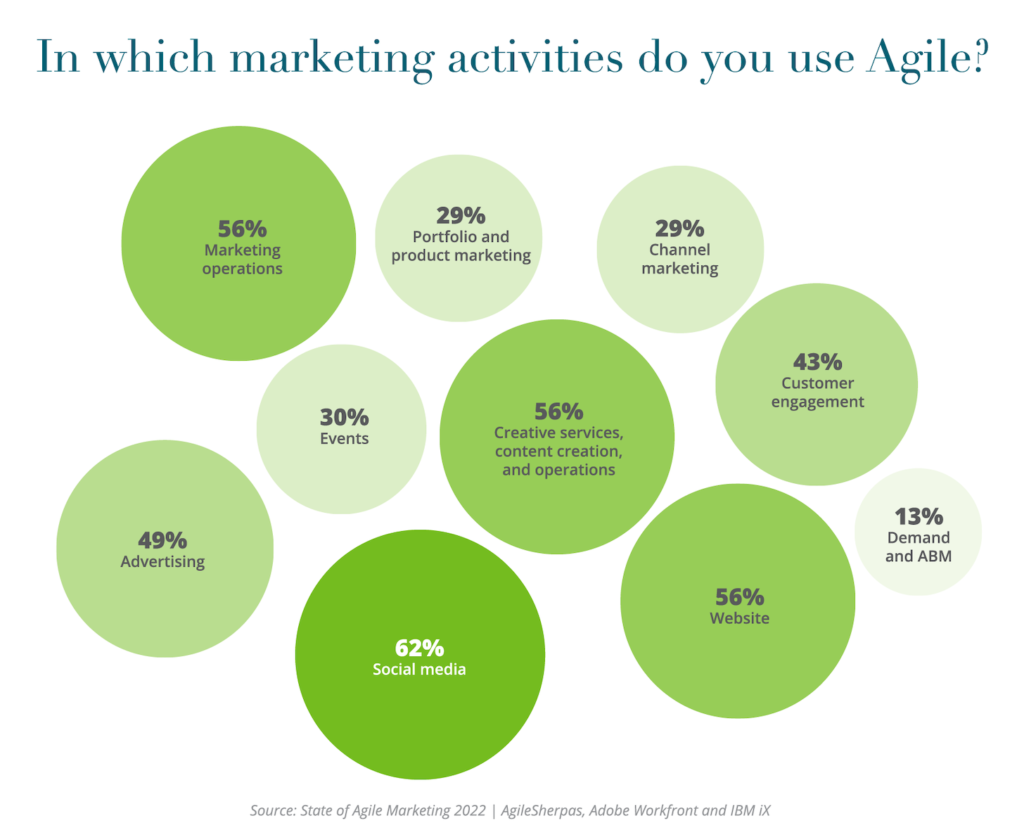Marketing has shifted from the business of communications to the business of experiences. It’s the experiences that we give our prospects and customers, from their very first touchpoint with us onward, that “communicates” our brand. And in a digital world, almost all of those experiences are mediated by software.
Once you accept those premises, then you will naturally conclude that a modern marketing organization needs to have great user experience, or UX, capabilities.
Of course, if I had to pick one other capability for the modern marketing organization to have, it would be agility: the culture and processes to support rapid iterations, cross-disciplinary team collaborations, and meaningful experimentation — a willingness to try new ideas in smart ways. I’m a big fan of agile marketing with that mission in mind.
Imagine now, if you blended those two capabilities together: a recipe for awesomesauce.
That’s why I’m very excited that Jeff Gothelf, author of the Jolt Award-winning book Lean UX, principal at Neo, and pioneer of “agile UX” and “lean UX” methodologies, will be joining us at MarTech to present a session on why Lean Product Design Is The New Marketing.
I’ve read Jeff’s book twice, and I’ve decided that if I had to recommend just one book to a marketer to introduce them to agile and lean thinking, this would be it. While the book describes lean UX in the context of building software products, I think marketers can better relate to UX design than they can to books written more from a programmer’s perspective of agile.
There are a lot of parallels between software UX and marketing campaigns and programs — understanding the user (re: prospect, customer) and addressing their pain points in the right context. Traditional marketing, like traditional software development, would previously have sought to map out the perfect design before building the campaign or program (i.e., “here’s what we’re going to do”). Jeff walks you through a better way of creating the right outcomes with your audience through a process of continuous development.
Frankly, I believe Jeff’s book is worth it just for Chapter 2 alone, which describes the underlying principles of a lean UX approach — which every marketing manager should grok:
- Cross-functional teams — collaboration among different disciplines fosters creativity
- Small, dedicated, co-located teams — optimize for team communication and bonding
- Progress = outcomes, not output — measure all work by its impact on real customers
- Problem-focused teams — the team is focused on a business problem, not a set of tasks
- Removing waste — ruthlessly jettison processes that don’t help move outcomes forward
- Small batch size — work in small increments where possible to test ideas in the world
- Continuous discovery — understanding prospects and customers is an ongoing journey
- GOOB (“get out of the building”) — go talk to real customers in their environment
- Shared understanding — teams aren’t just a sequence of siloed contributions
- Anti-pattern: rockstars, gurus, ninjas — team cohesion is better than stars
- Externalizing your work — get ideas out of heads and into tangible forms
- Making over analysis — just debating ideas is a waste, go try them out
- Learning over growth — learn what works before you rush into scaling it up
- Permission to fail — breed a culture of experimentation, which breeds creativity
- Getting out of the deliverables business — focus on customers, not documentation
I caught up with Jeff last week for a brief Q&A:
1. You’re giving a talk at MarTech called “Lean Product Design Is The New Marketing” — a very intriguing title. What should the audience expect?
Software is eating the world, as Marc Andreessen said. Any business of scale — or seeking to scale — is driven by technology, regardless of the product our service you’re delivering.
The way we make software has fundamentally changed — even more so in the last 5 years than in the past 10-15. mostly because of the advancements in continuous deployment. We can ship any software at any time to our audience. We don’t have to wait 6-18 months between releases.
This fundamentally changes the way we make digital products and the conversations we can have with our audience. We’re taking what used to be a staggered pattern of interactions and turning it into a continuous conversation. We can push bits into the market, listen to the conversation it stirs, and respond to it. It’s collapsing the cycle times of these feedback loops, approaching a truly continuous exchange. The extreme version of this is Amazon, which pushes new code live every 11.6 seconds.
[Lean] doesn’t just inform development — it informs marketing. These iterative experiments teach you what your audience values.
This can be a continuous learning loop. It reduces the waste of spending time on initiatives that aren’t going to work. It doesn’t just inform development — it informs marketing. These iterative experiments teach you what your audience values. Done well, this lets you connect with your customers both quantitatively (by measuring) and qualitatively (by understanding why).
The gist of my talk will be: how do you do this? I’ll share the tactics of how you get started, what a good team structure should like, and the kinds of tasks that you should focus on.
2. In Lean UX, you emphasize the importance of shifting emphasis from “deliverables” to “outcomes.” How difficult is it for companies to make the cultural change to support that? What do you think is key to those who succeed?
These can be very difficult changes to make. Most organizations have to take these shifts incrementally — they can’t turn the boat all at once. Start with one or two teams, or one or two products.
But it does require a top-down commitment. This shift can only happen if the leadership of the organization is willing to reassess how they define success from deliverables — such as features, campaigns, and updates — to outcomes.
When evaluating activities, there needs to be a collective question of, “So what?” What difference did it make to the customer? To the business? They have to have the courage to ask that question, answer it truthfully, and be willing to take action based on the answer. It’s having the maturity to change course if “there’s no there there.” Being willing to admit we were wrong, stop an effort, and pursue something else.
A lean culture is about having continuous curiosity and organizational humility.
A lean culture is about having continuous curiosity and organizational humility, the willingness to ask, “Is this still the right thing to do?” There are certainly a lot of companies that use the words “agile” and “lean” — it’s become a cargo cult. But without that shift in culture, they’re not pursuing the real meaning behind it.
3. I like in your book how you note that designing tests is a creative process. Many marketers still think of experimentation as being on the opposite end of the spectrum from classical artistic creativity. How do you reframe this thinking around what creativity is?
Lean can feel cold and scientific on the surface, but the creativity part comes from design-thinking circles.
In lean, you’re seeking to create empathy with customers — product teams that have designers, marketers, and engineers working together to understand the customer, their pain points, and the contexts in which they experience those pain points. The creativity in lean emerges from a team effort, generating ideas for possible solutions to those pain points.
The team then creatively generates experiences to test what seem like the most promising ideas. There’s so much art in evaluating the qualitative feedback from experiments. It’s not just about being data-driven. It’s about being data-informed: I know what’s happening, and I believe why.
Thanks, Jeff — I’m really looking forward to your talk next month!
NOTE TO READERS: Come hear Jeff and over 25 other amazing speakers at MarTech — register today before all the seats are gone!





Great to see lean thinking, which I have been leveraging in operations for 20 years, and general office processes for 10, finally arriving at the CMO’s desk. Will scare the daylights out of the lightweights and cliche drivers.
Very well put! Lean is still a struggle in Technology and Product at the moment and the great thing about moving to agile practices is that it exposes the weaknesses almost immediately. I am very sure Marketing Leaders have no idea what self organized teams are meant to do and the amount of disruption they are introducing means they will have to redefine their own role in the organization.
I’m also a big fan of Lean thinking in the context of marketing (more so than Agile/Scrum). This book just got bumped to the top of my reading list.
I recommend Lean Startup for marketers. Like Scott says about Lean UX, it isn’t directly written to marketers, but philosophically it’s exactly the kind of thinking that marketers must adopt.
Good stuff!
really good post!